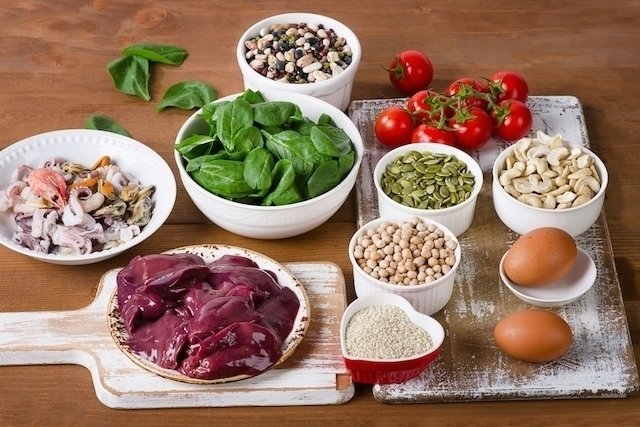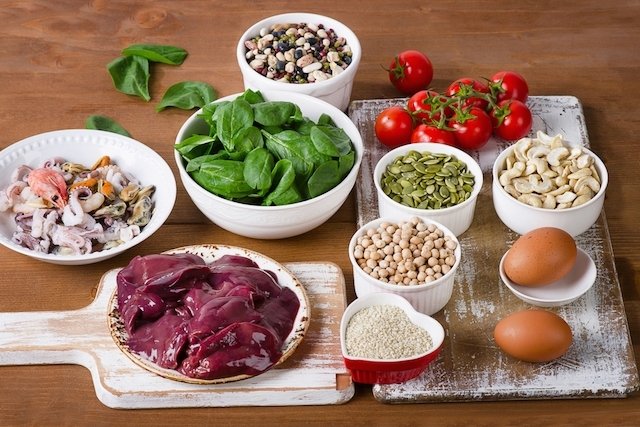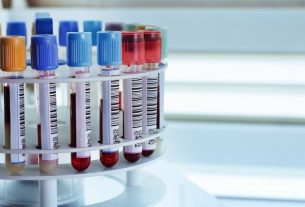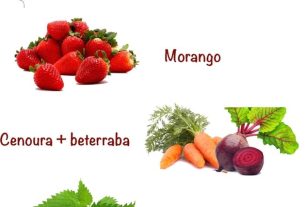The main foods rich in iron are beef, chicken, fish and seafood. Furthermore, iron is also found in good quantities in foods of plant origin such as pumpkin seeds, raisins and pistachios.
Iron is an important mineral for the production of hemoglobin, a component of red blood cells responsible for transporting oxygen. Furthermore, iron also improves mood and strengthens the immune system.
Foods rich in iron should be eaten at all stages of life, and should be prioritized mainly by pregnant women, the elderly and babies, as these groups have a greater need for this mineral.

Benefits of Iron
The main health benefits of iron are:
- Prevent anemia, since iron participates in the production of hemoglobin, one of the components of red blood cells that transports oxygen from the lungs to the entire body and which is normally reduced in anemia;
- Strengthen the immune system, because it participates in the functions of immune system cells, such as neutrophils and macrophages;
- Improve mood, as iron is part of myoglobin, a protein that transports and stores oxygen in muscles, increasing physical capacity.
Furthermore, iron is also important for the healthy development and growth of children and for the production and functions of various hormones.
Table of foods rich in iron
There are 2 types of iron, heme iron, found in foods of animal origin, and non-heme iron, found in foods of plant and animal origin and fortified foods.
Foods rich in iron of animal origin
The following table indicates the amount of iron for every 100 g of foods of animal origin:
The iron present in foods of animal origin is better absorbed at the intestinal level. Intestinal absorption of iron in diets containing meat is about 25%.
Iron-rich foods of plant origin
The following table indicates the amount of iron in every 100 g of foods of plant origin:
The absorption of iron present in foods of plant origin is very low. Therefore, it is important to always consume these foods together with oranges, pineapple, strawberries and peppers, for example. This is because these foods are rich in vitamin C, a nutrient that increases the absorption of iron in the body. See other foods rich in vitamin C.
Tips to improve iron absorption
Some tips that also help improve iron absorption are:
- Avoid eating foods rich in calcium during main meals, like yogurt, pudding, milk or cheese, because calcium inhibits iron absorption;
- Avoid sweets, red wine, chocolate, coffee, green tea and black tea with meals, because they contain polyphenols and phytates that inhibit iron absorption;
- Cooking in an iron pan It is a way to increase the amount of iron in poor foods, such as rice, for example.
Eating fruits and vegetables with meals can also be an excellent way to increase iron intake and absorption. Discover some fruits rich in iron.
Recommended amount of iron
The recommended amount of iron per day varies depending on age, sex and stage of life, as shown in the following table:
Daily iron requirements increase during pregnancy because the amount of blood in the body increases to produce more blood cells and for the development of the baby and placenta. Meeting your iron needs during pregnancy is very important and, therefore, your doctor may recommend iron supplementation.
Bibliography
- NATIONAL INSTITUTE OF HEALTH – OFFICE OF DIETARY SYPLEMENTS. Nutrient Recommendations: Dietary Reference Intakes (DRI). 2011. Available at: <https://ods.od.nih.gov/HealthInformation/Dietary_Reference_Intakes.aspx>. Accessed on Nov 28, 2022
- ILSI BRASIL – INTERNATIONAL LIFE SCIENCES INSTITUTE DO BRASIL. Fully Recognized Functions of Nutrients – Iron. 2017. Available at: <https://ilsibrasil.org/wp-content/uploads/sites/9/2017/07/Fasc%C3%ADculo-FERRO.pdf>. Accessed on Nov 28, 2022
- UNITED STATES DEPARTMENT OF AGRICULTURE AGRICULTURAL RESEARCH SERVICE . USDA Food Composition Database. Available at: <https://fdc.nal.usda.gov/ndb/search/list>. Accessed on Nov 28, 2022
- STATE UNIVERSITY OF CAMPINAS – UNICAMP. Brazilian Food Composition Table. 2011. Available at: <http://www.nepa.unicamp.br/taco/contar/taco_4_edicao_ampliada_e_revisada.pdf?arquivo=taco_4_versao_ampliada_e_revisada.pdf>. Accessed on March 21, 2019

Sign up for our newsletter and stay up to date with exclusive news
that can transform your routine!
Warning: Undefined array key "title" in /home/storelat/public_html/wp-content/plugins/link-whisper-premium/templates/frontend/related-posts.php on line 12
Warning: Undefined array key "title_tag" in /home/storelat/public_html/wp-content/plugins/link-whisper-premium/templates/frontend/related-posts.php on line 13




